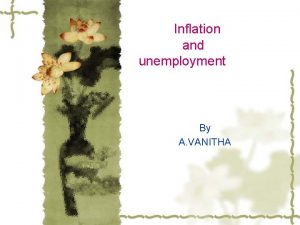Money inflation and deflation 1 Functions of money

- Slides: 1

Money inflation and deflation 1) Functions of money? Competencies: Being able to explain monetary functions, historical development and the role of central banks 2) Historical Development 3) The banking system We need money to exchange goods & services To overcome the problems of barter money must be 4) The price of money is the interest rate 5) Role of the Central Bank and its instruments Instruments of monetary policy = increasing or decreasing the money supply to speed up or to slow down the economy 6) Inflation & Deflation Majof Central Banks FED: Federal Reservy System (USA) Waashington DC IMF: International Monetary Fund, Central Bank of the central banks: Christine Lagard ECB: European Central Bank: Mario Draghi Austrian Central Bank: Ewald Novotny Principles of the Austrian Central Bank: Independence Financing of the state is not allowed Main Task: Monetary Policy Main Goal: stability of prices (max. 2% inflation) Inflation: general rise in the level of prices of goods and services: e. g. last year $25: 27/25*100=incr. of 8% hyperinflation: runaway inflation during which prices rise at phenomenal rates, money > worthless Deflation: general decrease in the level of prices of goods and services 1) Open Market Policy: Central Banks influence the money supply through buying and selling securities. 2) Quantitative Easing: Massive Open Market Policy during recession (4 Trillion US$) 3) Reserve Requirements: How much do banks have to deposit with the Central bank: 2012 it was reduced from 2% to 1% 4) Discount Rate: Price for borrowing at the central bank is the basis: 2019 EU 0% (basis for cheap loans to encourage growth) in the US 1% When interest rates are low: people borrow money and invest > boost up the economy When the rates are high, the recuce borrowing

